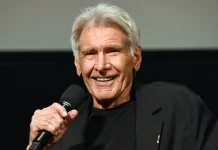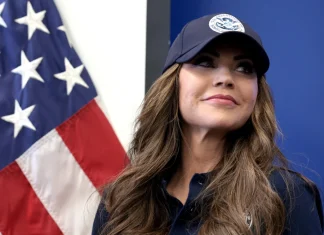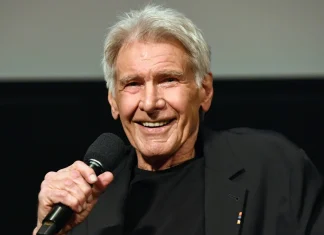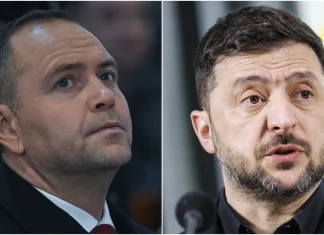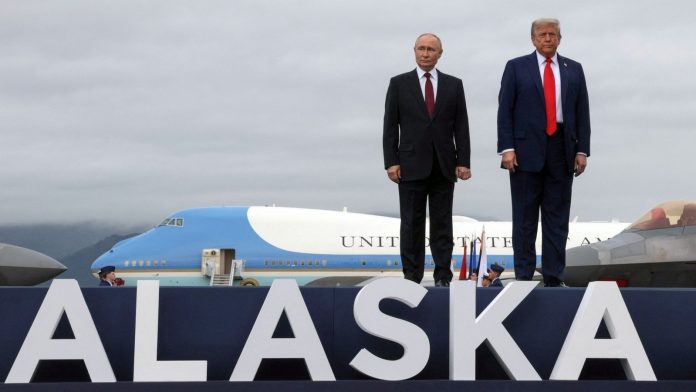
A Fragile Dance of Diplomacy: The Quest to End the Ukraine War Enters a New Chapter
In a world still holding its breath three years into Russia’s invasion of Ukraine, the intricate and emotionally charged saga of peace talks unfolds yet again. This time, the spotlight shines on a “coalition of the willing”—France, Germany, and Britain—who are gathering for a high-stakes video conference. Their mission: to explore tangible steps toward ending the conflict that has reshaped Europe’s geopolitical landscape and captured global attention.
What makes this moment particularly compelling is the backdrop of a dramatic shift in the US approach, with former President Donald Trump stepping back from his earlier, more ambitious ceasefire demands following his enigmatic summit with Vladimir Putin in Alaska. The summit, a whirlwind of tension, malaise, and unresolved issues, has left many questioning not just the immediate prospects for peace, but the underlying dynamics driving this protracted war.
From Alaska To Washington: Shifts in Strategy
In early June, the world watched as Trump met with Putin on the icy shores of Alaska for a summit that promised breakthroughs but delivered ambiguity instead. Central to the US president’s pre-summit rhetoric was the call for an immediate ceasefire, a position that raised eyebrows since neither Ukraine nor its European allies were part of the negotiating room—a glaring omission that set the stage for tension.
But the anticipated ceasefire did not materialize. Instead, Trump emerged calling for a direct peace agreement, suggesting that stopping the current fighting was less important than forging a broader settlement. The former president’s pivot was met with both hope and skepticism. Speaking on his Truth Social platform, Trump reminded followers that “ceasefire agreements often times do not hold up,” injecting a note of realism, or perhaps resignation, into the discourse.
Joining the conversation, President Volodymyr Zelensky, soon to visit Washington for critical talks, voiced cautious concern. “If Russia lacks the will to carry out a simple order to stop the strikes,” he commented, “it may take a lot of effort to get Russia to implement far greater peaceful coexistence with its neighbors for decades.” His words reflect the persistent gulf between desire for peace and the brutal realities on the ground in Ukraine.
A Proposal on the Table: Territorial Concessions and Frozen Frontlines
The summit revealed a tentative plan floated by Putin and tentatively endorsed by Trump: a proposal for Ukraine to cede full control over Donbas regions—Donetsk and Lugansk, long flashpoints of the conflict—in exchange for a freeze on frontline combat in two other contested regions, Kherson and Zaporizhzhia. This territorial bargaining was described by an official involved as “Putin de facto demanding that Ukraine leave Donbas.”
To many observers, this felt like a drastic gamble. These four regions, Russia asserted in September 2022 were annexed, yet control remains contested and the situation volatile. Ukrainian officials rejected the idea outright, with Zelensky “refusing to leave Donbas,” underscoring the stark divide between negotiating positions.
The Human Cost Behind the Lines
Relinquishing Donbas is not just about maps—it’s about the lives and identities of millions. Locals describe it as home, with centuries-old ties severed by the turmoil. Olena, a schoolteacher from Mariupol, shared her heartache: “We have buried our hopes and dreams alongside our neighbors who never returned. Giving up is not just a tactic; it’s the loss of generations.” Her story puts a human face on geopolitical chess moves.
Security Guarantees and European Reckoning
During his return flight from Alaska to Washington, Trump also pledged US security guarantees to Ukraine—a commitment hailed by German Chancellor Friedrich Merz as “significant progress.” For Europe, ensnared in the conflict’s proximity, this is no small gesture. It hints at a willingness to underpin Ukraine’s sovereignty against future aggression.
But not everyone viewed the summit’s outcomes positively. Kaja Kallas, European Union’s foreign affairs chief, issued a sharp rebuke, accusing Putin of “dragging out negotiations” with no sincere intention of ending the bloodshed. “The harsh reality,” she stated, “is that Russia has no intention of ending this war anytime soon.”
There’s an echo here that resonates deeply. From Kyiv to Brussels, and Washington to Paris, the dim reality of a protracted conflict frames diplomatic efforts with cautious pragmatism.
Lessons from the Past: A History of Missed Agreements
History has shown ceasefires in this conflict are precarious. The Minsk agreements—once hailed as blueprints for peace—crumbled under the weight of distrust and broken promises. Fragile and ephemeral, ceasefires have often served as breathing space for militaries to regroup rather than genuine pauses toward reconciliation.
Looking Ahead: The Next Act in Washington
All eyes now turn toward President Zelensky’s upcoming Washington visit. His last trip to the Oval Office in February was marked by fierce tensions, as Trump and Vice President JD Vance expressed frustration over what they perceived as insufficient gratitude for US aid. This upcoming meeting carries the weight of expectations—political and human alike.
Zelensky, ever the pragmatist and symbol of Ukrainian resilience, described his recent conversation with Trump on the Alaska talks as “substantive.” He signaled optimism about future discussions aiming squarely at “ending the killing and the war.” Yet, for those who have lived through the war’s ravages, such optimism is invariably laced with skepticism.
The Global Ripple: Why Should We Care?
Why do these negotiations reverberate far beyond Eastern Europe? Because Ukraine is more than a battleground; it is a crucible where global values—sovereignty, justice, and self-determination—are tested. It challenges us to reflect: what do we owe to those caught in conflicts far from our doorstep?
The war’s impact ripples through energy markets, grain supplies, and political alliances worldwide. The International Crisis Group estimates over 20 million people displaced, with profound effects on global food security, driving prices and threatening hunger in vulnerable regions.
What lessons can we glean? How does the international community balance pressure with dialogue, justice with pragmatism? And what is the price of inaction?
A Complicated Peace, A Human Story
As the coalition of European leaders convenes, hope clings to the promise of diplomacy. Yet, beneath political statements lie stories like Olena’s, and millions like her, living amidst uncertainty and loss.
Perhaps the most difficult question is: can peace be forged without sacrifice, or does it demand the courage to face painful compromises? And how do we, as global citizens, hold onto our shared humanity through these turbulent times?
One thing is certain—the Ukraine conflict is more than a regional struggle; it is a mirror reflecting the complexities of modern diplomacy, the price of war, and the universal yearning for peace.
Stay with us as this story unfolds. Because the world cannot afford to look away.



